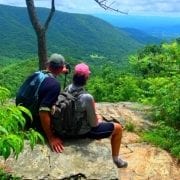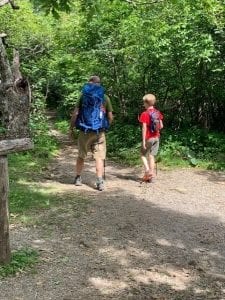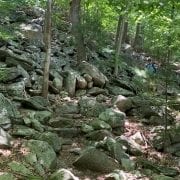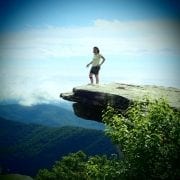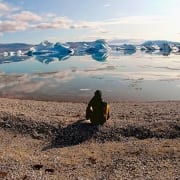“Listen! I am standing at the door, knocking; if you hear my voice and open the door, I will come in to you and eat with you, and you with me.”
Revelations [3:20]
SEVEN NEW YEAR RESOLUTIONS IDEAS FOR OUR FAITH
Every year we all make New Year resolutions. We want to exercise more or perhaps lose some weight. Essentially, we want to change in some way. Sometimes it’s big changes and sometimes small. The start of anything that makes us better is always a good thing. Staying the same not only will produce the same results, but in many cases we will go backwards.
So it is with our faith lives. Our faith should be nourished every day. Without this added attention, our faith will dim and the ways of the world will take up a bigger piece of our thoughts. Here are seven simple things we can all do to help our faith this new year. Any one of these will move us forward as Christians.
Read the Bible Everyday
Most Christians have a Bible, why not set aside 15 minutes a day to read the Bible. For instance, at a normal reading pace, if we read the Bible for 15 minutes a day, by the end of the year we will have read the Bible from cover! When we are done, we will be changed.
Sure there are hard parts, but there is also a richness in the difficult sections. Perhaps start with the New testament or even just the Gospels. After a week or so, it will become part of our daily routine. The hardest part is starting and continuing. But we will be surprised how important it becomes after just a week or two.
Go to Church More Frequently
Life is busy and our priorities can be overwhelming. Fitting in going to church every Sunday can be a difficult task. Perhaps our current church isn’t meeting our needs or our schedule. Perhaps Sunday morning comes up to quickly. Perhaps we need to find a church that better suits our lives. But going to church helps us, even in small ways.
Going to church helps our faith lives. There is more to church than just the sermon. There is fellowship with other Christians. It is a wonderful time to think about our upcoming week and how we can bring God into our lives.
Listening closely to the prayers being said and thinking about the words being expressed, will add to our faith. Likewise songs lift our souls, but also included in the songs are important statements that are similar to prayers.
God will speak to us when we are in church, maybe through the sermon or through a song. Or even a person we meet. I can honestly say, that each time I go to church, something new and surprising happens that helps my faith life.
Make Prayer a Part or Our Daily Routine
For some of us the best time to spend a few minutes praying, is in the morning. For others it may be at night. Regardless of the time and place, a short conversation with God through Jesus becomes a haven when it becomes part of our life routine.
Prayer is an important part of our faith lives, it is through our very personal conversation that we begin to see the connection between our prayer life and God’s answers. God will answer, our only task after we have prayed is to watch and observe. In the observation we will see God’s answer.
There are three types of prayers. The first is when we go to God with a request. The second is when we ask for help for someone else. The third and final is a prayer of thankfulness. Perhaps in each prayer, we can use all three types. The only caveats to daily prayer is consistency and being in a quiet place.
Read the Verse of the Day
Many Christian websites have a verse of the day. Some of my favorites are www.biblegateway.com and www.christianitytoday.com. Both have verses of the day. I particularly like going to Bible Gateway, as the first thing you see is the verse of the day. Many times, I will note how it applies to me or a situation I am familiar with.
Christianity Today, has daily newsletters that will can be sent directly to our emails. There are many sites that doing something similar. Over time, it will become part of our daily routine.
Join a Bible Study Group
Most churches have a Bible study group. If not, your local pastor can lead us to some in our communities. Most Study groups have a theme, like Christian mothers or Christian business people. It might take a few visits to a different groups before we find the right one, but there is one for all of us.
Bible study groups are a great place to be with people that share common life circumstances. Hearing others views is important as each person has a unique perspective. Many times I will hear a comment or statement about a verse that changes how I think. But we also share lives at Bible studies, we get to know other Christians and their lives. Not every Bible study group will fit, but there is one out there for us as individuals.
Join a Helping Based Organization
In every community there is an organization that helps those in need. Initially, it may just be volunteering your time. Perhaps later it can be serving on a committee. But in every community there are ways to help others. Most communities have a hospice program or a tutoring program. Certainly every community has a food bank or clothing center.
Spending time helping others, fulfills the second commandment of Jesus, by loving our neighbor. Surprisingly when we help others, we help ourselves.
Each Day Make a Difference in a Person’s Life
This is perhaps both the easiest and hardest one to accomplish. When we go to a store, say “Thank you” to the person waiting on us. Practice holding the door for someone else. Let other cars go in front of us when we are in a traffic jam. Essentially, slowing ourselves down helps others. Sure it might be inconvenient, but is the second or two we lose really that important?
Lend a hand to someone who is struggling, even when we are busy. Perhaps spend a few more moments listening to their story. Listening is our easiest gift to give.
These seven things can all be accomplished or perhaps one at a time. But in some way they all push us to be closer to God. In some way they affect how we treat others and strengthen our faith. Some can be hard to start, but after a few weeks, we find ourselves with a new routine.
This New Year, besides our normal resolutions, why not add a few resolutions that strengthen our faith lives. Jesus is waiting for us to answer his knock on our life’s door.
Blessings, until next time,
Bruce L. Hartman
Photo by Ian Schneider
We love giving credit to budding photographers to help them gain more exposure.


